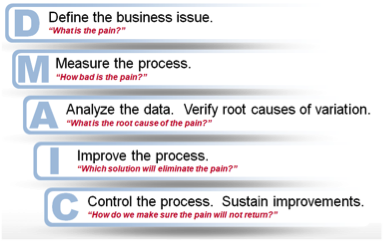
Part 10: Shortcuts Are Okay
TOP 10 PERFORMANCE IMPROVEMENT MISTAKES
Part 10: Shortcuts Are Okay Over the last several months we have shared nine of the most common mistakes that make the difference between success and failure of a Performance Improvement program. This week we are covering the final installment of this series: shortcuts are okay. Ironically, most healthcare organizations turn to performance improvement initiatives to correct the cumulative effect of shortcuts over a long period of time: unpredictable costs, high waste, inefficiency, indecision, frustration and oftentimes danger.
Over the last several months we have shared nine of the most common mistakes that make the difference between success and failure of a Performance Improvement program. This week we are covering the final installment of this series: shortcuts are okay. Ironically, most healthcare organizations turn to performance improvement initiatives to correct the cumulative effect of shortcuts over a long period of time: unpredictable costs, high waste, inefficiency, indecision, frustration and oftentimes danger.
While any improvement is better than no improvement, the quest should be to improve the process as much as current resources, technology, and organizational culture allows. At the process level, the most fundamental way to do that is to trust the methodology. Within Six Sigma that methodology is the five-phase DMAIC (Define-Measure-Analyze-Improve-Control) approach to solving problems and improving a process. Within each of these five phases are a set of steps and deliverables.

Just as with treatment protocols, certain steps are sacrosanct. This rigorous approach of these methods, which has differentiated them from their predecessors, ensure sustained results that transform culture and maximize financial returns, an area where other methods have failed. It seems counterintuitive that a disciplined approach could, in fact, enhance creative problem solving.
Within the Define Phase of DMAIC it is an absolute certainty that you must have a charter, a SIPOC diagram, and listen to the Voice of the Customer. Unless you want to risk suboptimizing your results, don't skip these steps. In the Analyze Phase, which tools are needed to verify the root cause of the problem? There are many options ranging from subjective tools such as a fishbone diagram through graphical analysis, or possibly even statistical analysis.The degree of rigor should be based on the amount of risk that the organization is willing to assume. In some scenarios, taking shortcuts on a project can cause poor or even negative results for the organization as a whole. Because of the complexity of healthcare processes, "pulling a lever" in one area may cause unintended results in another.
Just like taking shortcuts on a project, failing to recognize the key steps for deploying methods like Lean, Six Sigma and Constraints Management puts an organization on a path to poor results the same way failing to follow a treatment protocol would. The deployment roadmap for these methods has changed and matured significantly over time as it was tested first in manufacturing organizations, then refined for service organizations like banks and insurance companies, and now optimized for healthcare. There is no shortcut, but there is a specific path that is known to produce a highly effective performance improvement program.
PREVIOUS EDITIONS
Part 1: Create an Inventory of Experts
Part 2: It's All About Quality
Part 5: The Theory of Evolution


Follow Us: